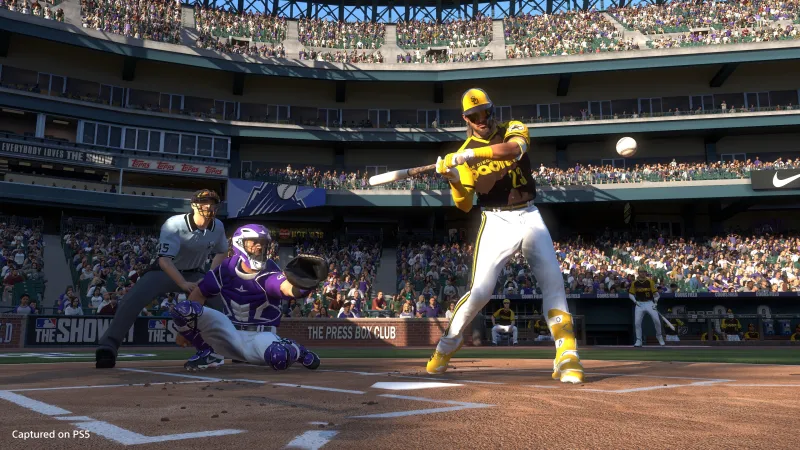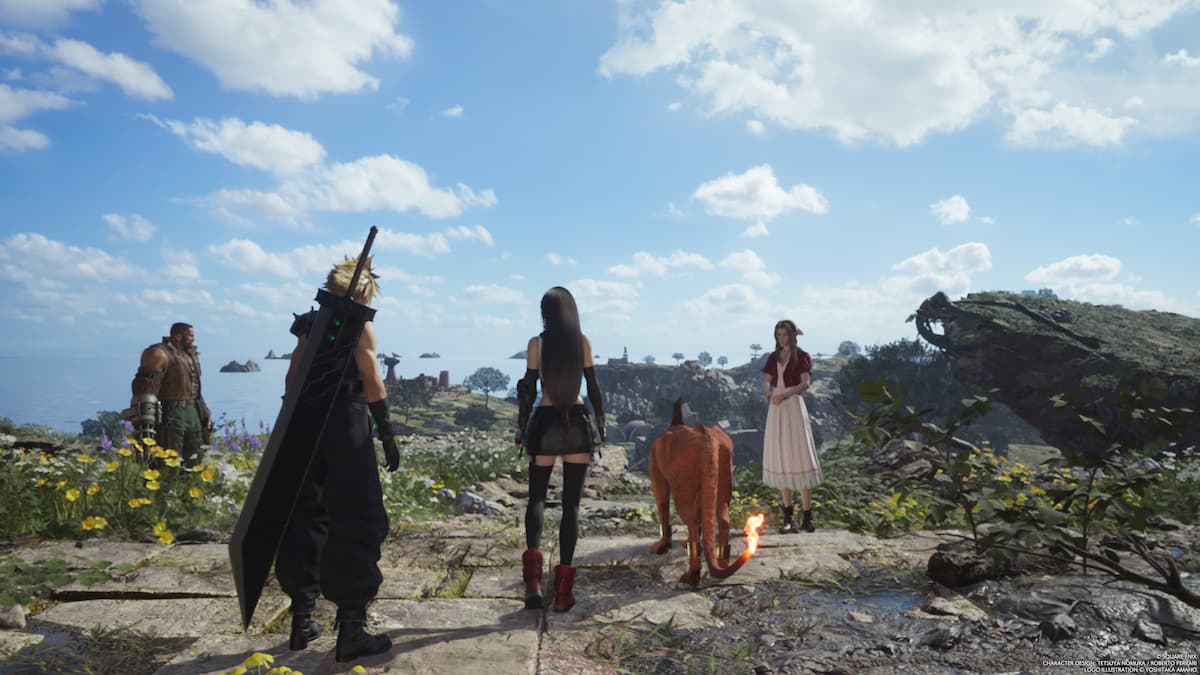
When a long-running sports series migrates to a new console generation, the fan base expects change. Developers usually answer that call with improved visuals, inventive gameplay ideas, and enhanced feature sets that couldn’t be achieved on older hardware. MLB The Show 21 doesn’t make a strong case to upgrade in any of these areas. You have to squint to see the graphical differences, the gameplay is identical, and the only content exclusive to new-gen are post-game commentary videos and a stadium creator.
The biggest improvements are reduced loading (shaving off about 10 seconds at any given time), smoother framerates, and a higher resolution – basically what we see from most cross-generation games. Rather than stepping to the plate as a flashy rookie who will redefine the sport, MLB The Show 21 is more akin to the savvy veteran who has been playing the game for 15 years.

Sony San Diego has achieved great success through yearly iteration, periodically dazzling with a new idea that catches fire. This year’s game focuses intently on improving the core on-the-field play, making it tighter, smoother, and more realistic. While not delivering a new idea will turn heads, a bevvy of gameplay tweaks and additions go a long way to make MLB The Show 21 the best baseball game to date. Yes, it’s long been the only notable baseball game in town, but it shouldn’t be shortchanged for that; the foundation has been fantastic and ranks as one of the best in all of video game sports.
This year, fielding benefits the most from iteration. With hundreds of new animations in place, fielders take more realistic routes to balls, and rather than make awkward turns to adjust to ball trajectories, they can now strafe to course correct. Infielders’ swiftness is also highlighted more with cool little wrist flick throws if their momentum is carrying them away from a play. I saw far fewer fielding animation glitches or inaccuracies than I have in years past, and most of the flashy plays looked outstanding. I love the little flourishes that Sony includes, even after a play ends. It’s an incredibly fluid-looking game, and it’s amazing how quickly it can queue up a specific animation for a situation, like a rocket groundball eating a player alive.
Click here to watch embedded media
If you thought all the existing pitching mechanics were too easy to use to paint the corners and make batters’ knees buckle, a new Pinpoint Pitching system delivers a higher level of difficulty, as it pushes you to execute the timing and motion for specific pitches through different analog stick movements. A fastball requires little more than a flick down and up, but to execute a curveball or slider, you’ll need to make smooth circular motions. Any deviation from the required movement and speed leads to a loss in accuracy. While I love seeing the percentage as to how accurate I was with any given pitch, I found this pitching mechanic to be tiring over a nine-inning haul, and not as much fun as the old meter system, which is still in the game and better than ever thanks to rebalancing.
Road the Show is also a beneficiary of subtle, yet noteworthy change. Your rookie can now be a two-way player like Shohei Ohtani, giving the chance to both pitch and play the position of your choice. This player option gives you the best of both worlds; batting and fielding for four consecutive days and then toeing the rubber on the fifth. It’s a fun (and rare) entry point into the world of baseball.

Road to the Show’s development for all player disciplines is handled well, but too much emphasis is placed on stat bumps coming from collectible gear, like sunglasses, cleats, bats, and more. Player development ends up looking similar to a game like Destiny where you are constantly changing up loadouts for stat boosts. If you are a two-way player, you’ll want different loadouts for pitch and batting, which can be a nuisance having to retreat to the clubhouse to change it up.
Road to the Show’s overall gameplay and progression paths are mostly unchanged, but the post-game presentation and the semblance of a career-based narrative are improved thanks to videos and commentary by former big league players, MLB Network analysts, and other guests. Some of the Road to the Show changes hurt the experience, however. You can no longer truly pick a defined archetype, and given how player progression works, you can’t import your MLB The Show 20 player. That said, I do love how you can bring your new rookie into Diamond Dynasty to see how he fares in the competitive space.

It’ll take tons of playing and awesome loadouts to get him into the range of the 90-plus legends, but seeing your rookie in the lineup between the likes of Roberto Clemente and Ken Griffey Jr is pretty darn cool. The selection of legends offered right out of the gate is fantastic, as are the programs tied to some of them like Jackie Robinson and Eric Davis. Unlocking them takes some effort, as does earning currency to buy packs of cards (which is a bit more generous this year). Notable rewards are tied to the new Daily Moments, and legacy modes like Conquest and Programs have been reworked to reduce the grind and offer better rewards. Diamond Dynasty is once again flush with awesome avenues of play for both single-player and competitive reasons. Even with Road to the Show improving, Diamond Dynasty remains the main attraction, and makes assembling a roster a blast.
Click image thumbnails to view larger version
Franchise mode received significant back-end tweaks that help with player development and evaluation. Revamped depth charts give you a clean look at the organization and who you may want to give a chance. In March to October, prospects now play a role in this single-season format, thanks to fast-track moments that give you the opportunity to boost a rookie to MLB potential. I’m still early in my March season, and haven’t seen one of these moments, but I hope it adds a spark of youthfulness to my team late in the year.
If you make your own team in Diamond Dynasty or want a new home for your Franchise team, you now have the chance to create a stadium that fits your needs and style if you are playing on new-gen systems. The stadium creator is fairly complex and not as intuitive as I had hoped, but does allow for a high range of baseball cathedrals to be made. Using the loaded suite of options, I created a classic stadium like Fenway Park with giant blue walls in right and left field, and also a fantasy park with living dinosaurs roaming a prairie beyond the outfield walls. Sony needs to do a better job of highlighting the best user-created stadiums, and also removing the offensive stadiums uploaded by users, but I did manage to find a lot of great creations to explore and draw inspiration from.

For Xbox players who are jumping into The Show for the first time, Sony offers a nice onboarding system with quick and detailed tutorials for all avenues of play. This includes offering up a clear difficulty path right out of the gate for Casual (pick up and play), Simulation (based on player and team ratings), and Competitive (focused on stick skills).
As for what system the game plays the best on, the PS5 DualSense controller delivers better haptic feedback for specific in-game actions, but this is the only noticeable difference I saw between the Xbox and PlayStation versions. There isn’t a bad path into this year’s game. Crossplay seems to be working great at launch, sans some connection/server errors during launch week.
MLB The Show 21 lacks flash and new experiential paths this season, but continues to improve on the field and beneath the hood, giving an entirely new audience of players a hell of a game to begin their baseball careers with.

Score: 8.5
Summary: Sony’s long-running baseball series impress on the diamond yet again, but doesn’t deliver many new experiences.
Concept: The best baseball game continues to improve, but doesn’t swing for the fences in its new-gen debut
Graphics: Fielding fluidity is much better this year, showcasing better routes to balls and cleaner transitionary animations. From the play on the diamond to the surrounding stadium, the entire game looks stunning and delivers a high level of realism
Sound: The commentary team follows the flow of play nicely, and the short post-game podcasts help flesh out your rookie’s career in Road to the Show
Playability: The new pitching mechanic adds challenge, but isn’t as much fun to use as the legacy options. Road to the Show and Diamond Dynasty are subtly improved and offer great experiences that go hand-in-hand
Entertainment: Even without many new features, The Show impresses with its play and wealth of content. There’s something for everyone
Replay: High



